Situation
MyProduct Promotions is an online tool used by over 200 Tesco colleagues (Buyers, Buying admins, Trade planners and Category planners) to load and manage Tesco store promotions. This number doesn’t include suppliers to Tesco, who also use the tool to the same end.
There was a colleague's perception that the tool was simply a necessary end part of the process to load promotions. Our initial challenge was to look at this process and create a vision for change.
What we did
Research
We conducted 12 interviews with key Tesco colleague stakeholders and suppliers to understand workflows and pain points. Ensuring nuances within business categories and roles were covered. We then correlated our findings with business insights from product owners and reached the following hypothesis.
Findings
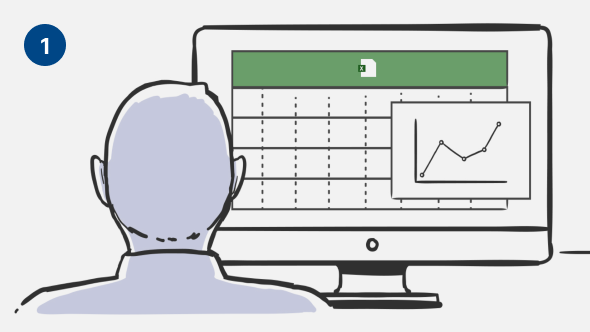
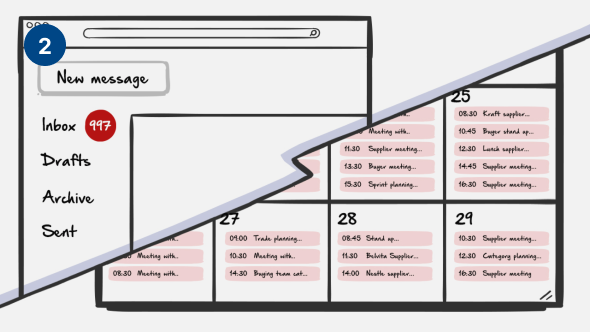
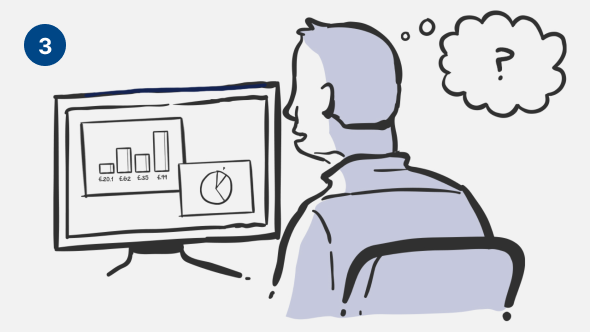
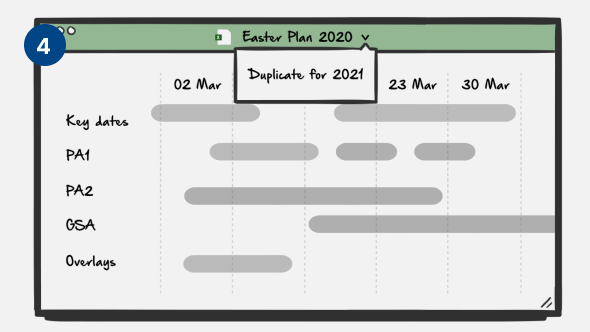
1. Poor processes & siloed working
Colleagues created their own custom spreadsheets to manage promotions in Excel. There was not a standard process or templates for these documents. This meant sharing best practices and artefacts was poor.
The current browser tool was seen as simply a promotions loading/scheduling tool.
Colleagues created their own custom spreadsheets to manage promotions in Excel. There was not a standard process or templates for these documents. This meant sharing best practices and artefacts was poor.
The current browser tool was seen as simply a promotions loading/scheduling tool.
2. Poor communication
Most communication around managing promotions took place over email, or through meetings (in person or through Teams). Many colleagues found the volume of communication overwhelming and inefficient.
Most communication around managing promotions took place over email, or through meetings (in person or through Teams). Many colleagues found the volume of communication overwhelming and inefficient.
3. Mistrust of data
There was also a mistrust of data from external sources. Many colleagues preferred to use their own forecasts (typical taken from historic sales). Accurate data was not being used to help drive decision making at key points.
There was also a mistrust of data from external sources. Many colleagues preferred to use their own forecasts (typical taken from historic sales). Accurate data was not being used to help drive decision making at key points.
4. Generic, repeated promotions
Many promotions were generic, heavily led by seasons and repeated events. Promotional activity is often based on what was done previously, with small improvements/amendments. Repeating promotions meant that a volume of activity is not targeted or personalised.
Concept designs
We then took each problem area identified in the research, and brainstormed initial concepts, using the crazy eights methodology.
The preferred early solutions were then transformed into conceptual wireframes so we could present back our work and initial ideas to key stakeholders.

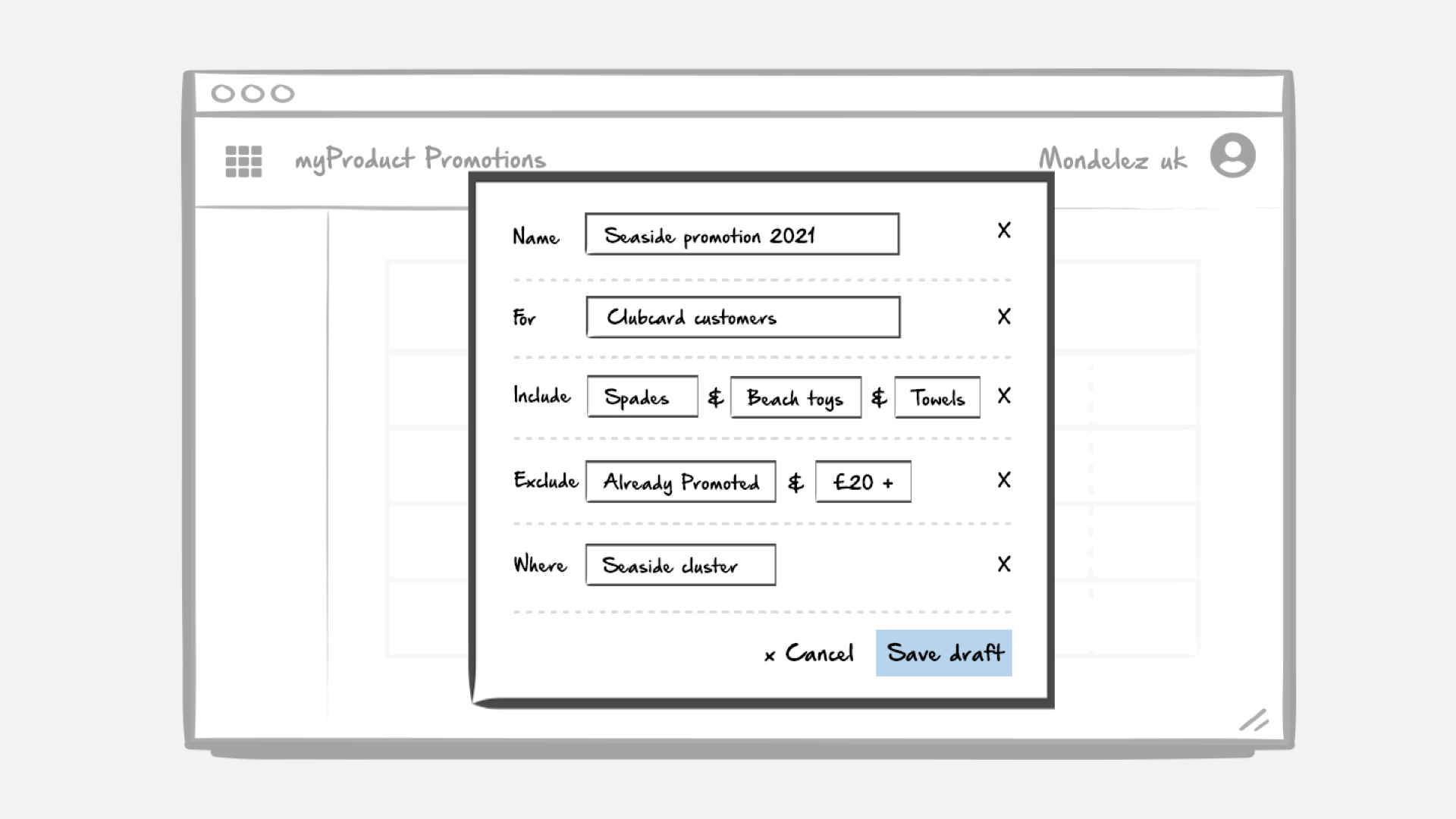

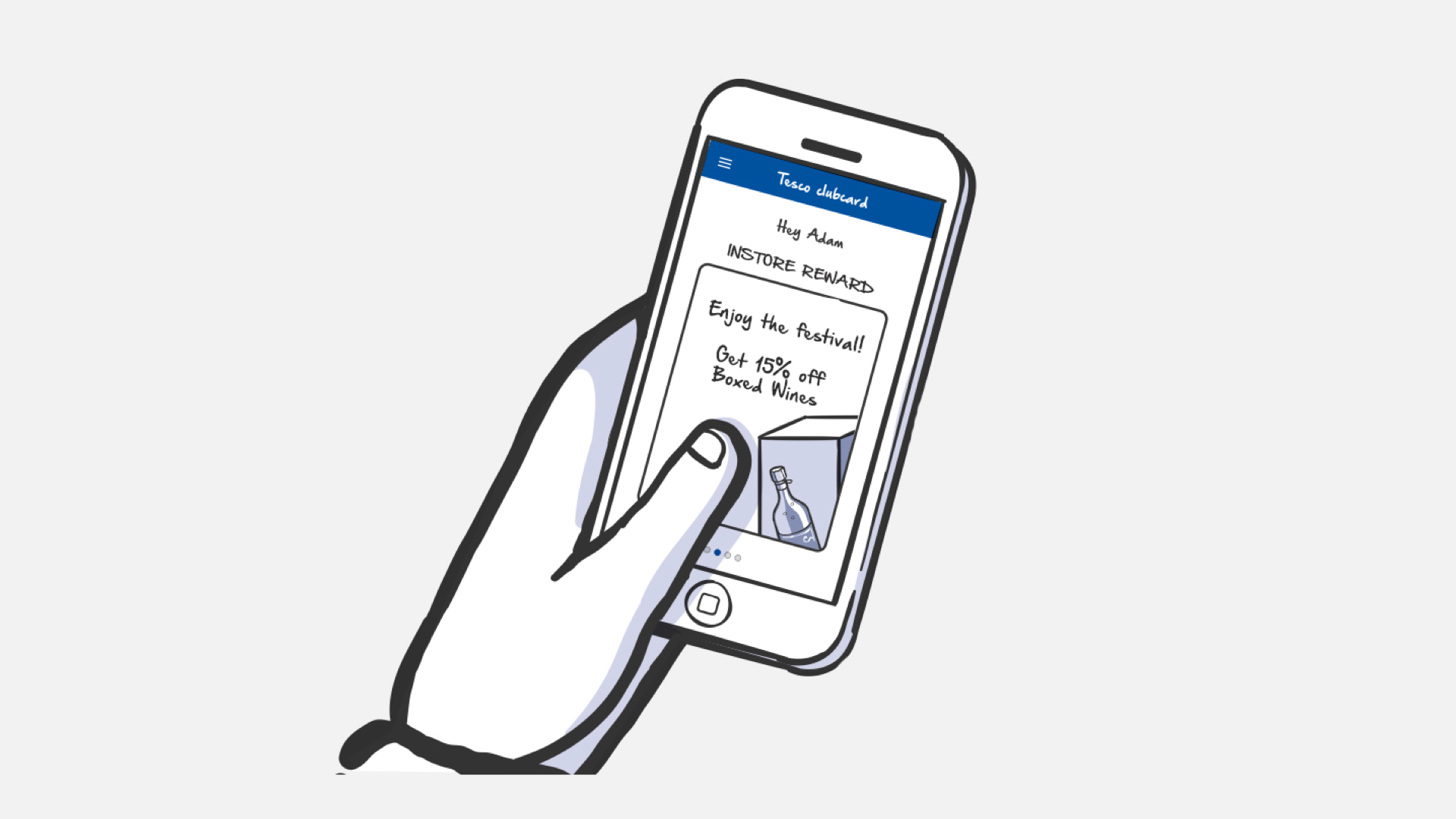
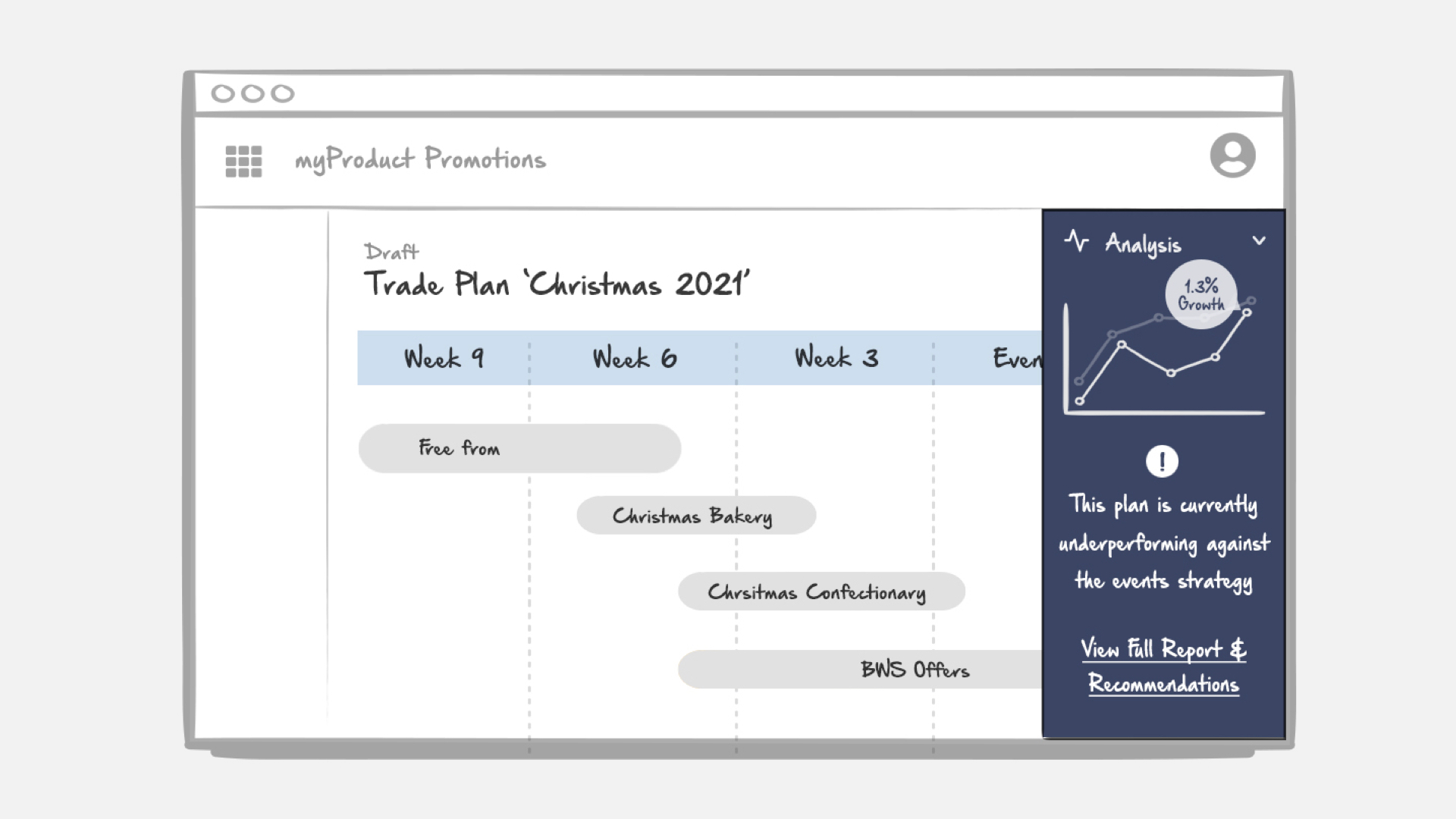


Prioritising features
With the conceptual wireframes complete we were then able to get the team together to plot the solutions against estimations for perceived value vs the effort to create. This allowed the product team to decide what solutions we would tackle first in our MVP designs.
Design system
At the time of undertaking the more detailed UI design, a new design system was being introduced. This was a derivative of a centralised design system and was being created to tackle the intricacies of a complicated data heavy tool.
The approach to create this was largely federated. Products teams were expected to add components while undertaking product feature designs.
Only one previous project had taken on design features in this space, so our design work was instrumental in expanding the design system. We did this by making sure the wider design community was updated weekly on new work and the possible impact new patterns could have on upcoming projects.
The approach to create this was largely federated. Products teams were expected to add components while undertaking product feature designs.
Only one previous project had taken on design features in this space, so our design work was instrumental in expanding the design system. We did this by making sure the wider design community was updated weekly on new work and the possible impact new patterns could have on upcoming projects.
Detailed design
1. Workspace zone principles
Created design zone principles for the workspace, where the left hand side would work as a secondary zone for data control within the workspace. The top area would be a global navigation and search area, and the left would be used for Data Analysis tools.
Created design zone principles for the workspace, where the left hand side would work as a secondary zone for data control within the workspace. The top area would be a global navigation and search area, and the left would be used for Data Analysis tools.
2. Quick draft promotion creation
Created design zone principles for the workspace, where the left hand side would work as a secondary zone for data control within the workspace. The top area would be a global navigation and search area, and the left would be used for Data Analysis tools.
Created design zone principles for the workspace, where the left hand side would work as a secondary zone for data control within the workspace. The top area would be a global navigation and search area, and the left would be used for Data Analysis tools.
Initial design for draft promo creation
Final design for draft promo creation
3. Customisable workspace
We explored in the designs produced a way of allowing the workspace to be customised and saved in the following ways. Firstly the user could view the date either in a list, a kanban or plotted on a timeline. This allowed the user to view promotional material via status, or visually by date plotted.
We also created a way for users to view promotions across buying areas, this allowed colleagues to cover other areas when needed and for managers to manage promotions across larger data samples.
Lastly filter controls were introduced to enable colleagues to easily view promotional activity and a granular level.
We explored in the designs produced a way of allowing the workspace to be customised and saved in the following ways. Firstly the user could view the date either in a list, a kanban or plotted on a timeline. This allowed the user to view promotional material via status, or visually by date plotted.
We also created a way for users to view promotions across buying areas, this allowed colleagues to cover other areas when needed and for managers to manage promotions across larger data samples.
Lastly filter controls were introduced to enable colleagues to easily view promotional activity and a granular level.
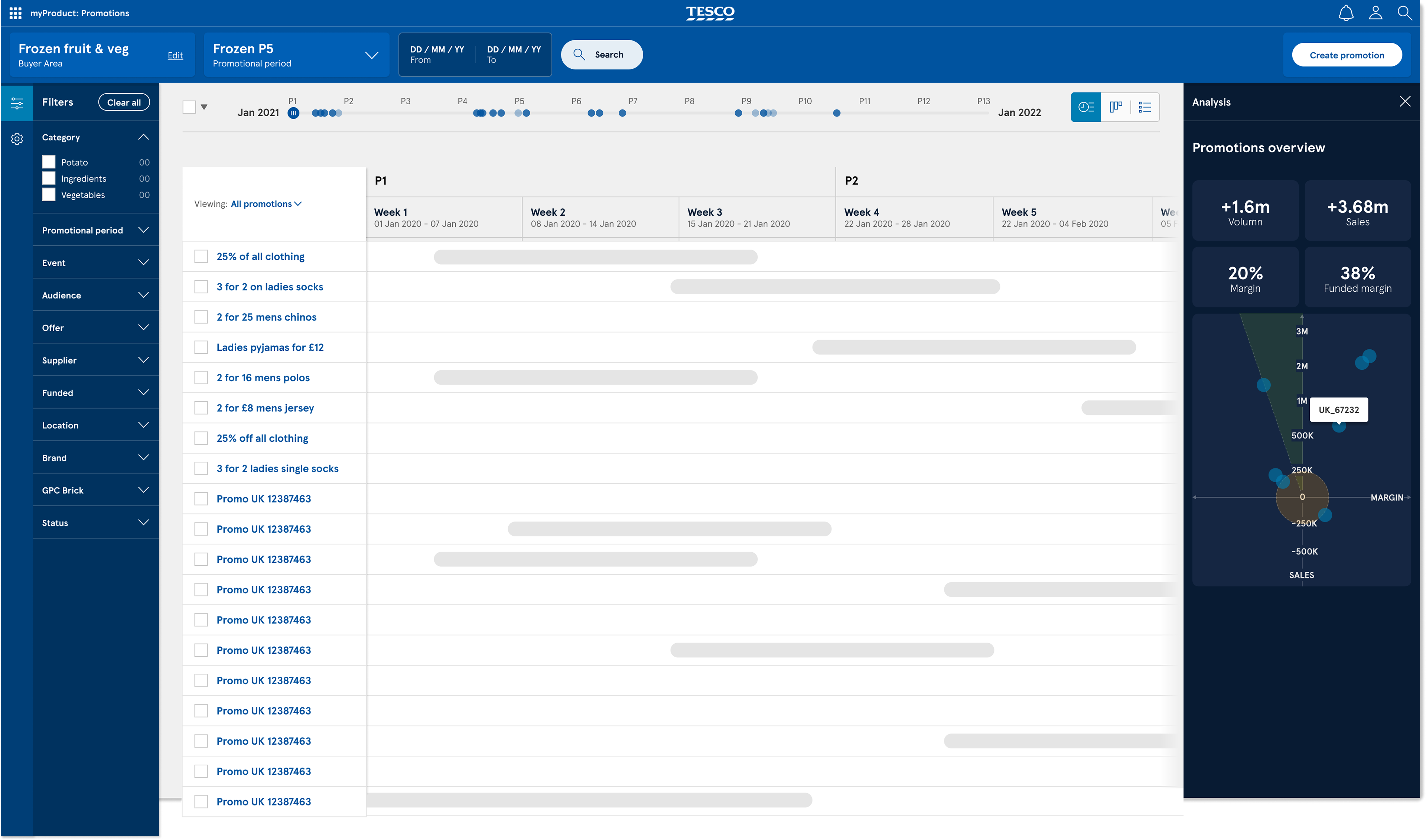

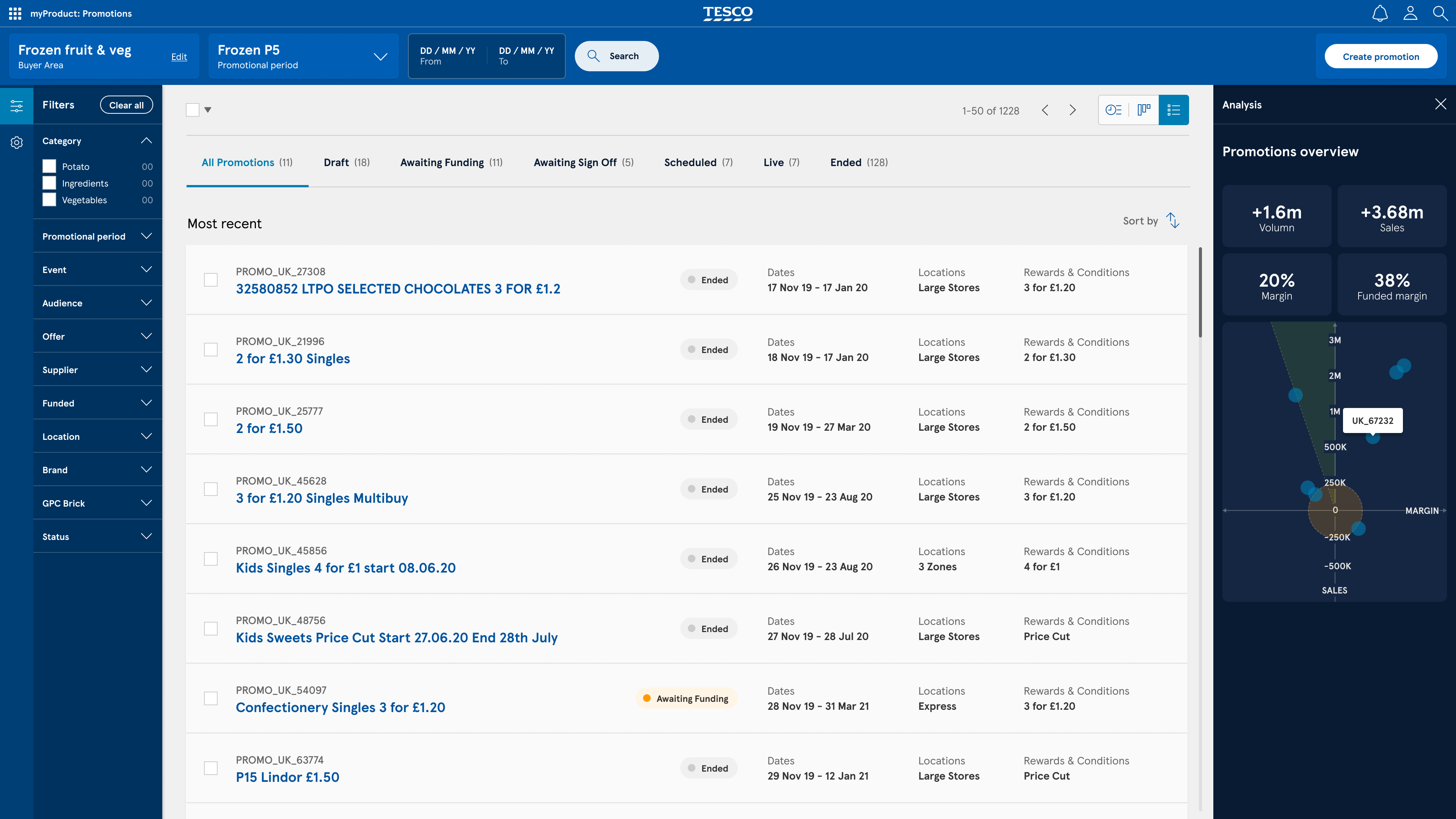
Outcome
With the conceptual designs created and the value change presented the team were able to successfully negotiate business buy in. This meant the work could go into a delivery cycle.